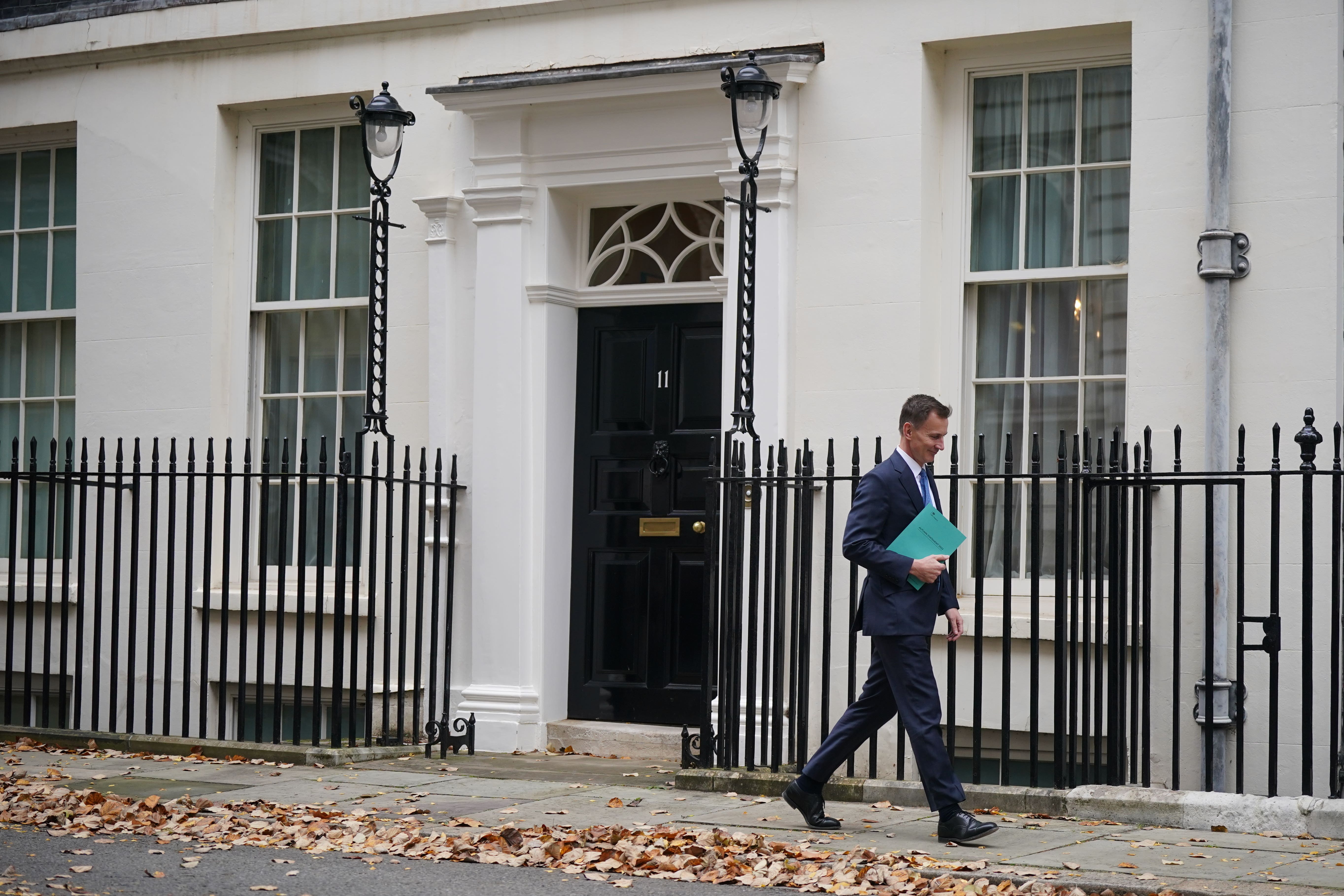The key points of the autumn statement and what it means for the next election
Two big tax cuts formed the centrepiece of Jeremy Hunt’s statement, raising questions about the timing of the next election.

Your support helps us to tell the story
From reproductive rights to climate change to Big Tech, The Independent is on the ground when the story is developing. Whether it's investigating the financials of Elon Musk's pro-Trump PAC or producing our latest documentary, 'The A Word', which shines a light on the American women fighting for reproductive rights, we know how important it is to parse out the facts from the messaging.
At such a critical moment in US history, we need reporters on the ground. Your donation allows us to keep sending journalists to speak to both sides of the story.
The Independent is trusted by Americans across the entire political spectrum. And unlike many other quality news outlets, we choose not to lock Americans out of our reporting and analysis with paywalls. We believe quality journalism should be available to everyone, paid for by those who can afford it.
Your support makes all the difference.Jeremy Hunt announced two major tax cuts and claimed the economy had “turned a corner” in his autumn statement.
But despite his upbeat assessment of the UK’s economic fortunes, analysts have cast doubt on whether the measures announced on Wednesday were sustainable.
With questions also swirling about whether this was the prelude to an election in early 2024, the PA news agency has looked at the key issues from the autumn statement below.
– What were the main announcements?
The two biggest announcements from the autumn statement were a pair of tax cuts billed as the biggest since the 1980s.
For employees, the Chancellor cut national insurance from 12% to 10%, while the self-employed also received a cut in national insurance in what amounts to a £10 billion tax giveaway.
For businesses, the decision to make the “full expensing” regime permanent delivers a tax cut of around £10 billion in the hope that it will promote investment.
Despite pre-statement rumours, Mr Hunt confirmed that benefits would be uprated by September’s inflation figure, not October’s, while the pensions triple lock will be maintained.
The Chancellor also confirmed that the minimum wage would rise by almost 10%, along with changes to benefits rules intended to reduce the number of people deemed unfit to work.
– What did the OBR make of it?
The independent Office for Budget Responsibility was more downbeat than the Chancellor, saying it was still forecasting the largest fall in living standards since records began in the 1950s, with disposable incomes 3.5% lower in the election year than they were before the pandemic.
The OBR has revised down its growth forecasts for the coming years, partly thanks to inflation remaining higher for longer than anticipated and not returning to its 2% target until the second half of 2025.
Despite the tax cuts, the OBR also expected the overall tax burden to continue rising over the next five years due in part to the decision to keep personal allowances frozen. The tax burden is now forecast to reach 38% of GDP by 2028/29, its highest level since World War Two.
– What does the autumn statement mean for services
The Chancellor provided very little extra money for public services, choosing instead to spend his extra “headroom” on around £20 billion in tax cuts.
In the context of persistent inflation, this means an effective squeeze on departmental budgets that some commentators have described as “implausible” and “unsustainable”.
The OBR said current plans suggested cuts to “unprotected” departments (budgets not including the NHS, schools, defence and overseas aid) of around 2.3% per year.
Paul Johnson, director of the Institute for Fiscal Studies, said of the squeeze on public service budgets: “There’s a material risk that those plans prove undeliverable and today’s tax cuts will not prove to be sustainable.”
– What does the statement mean for Conservative divisions?
Delivering two significant tax cuts is likely to have pleased restive Tory backbenchers who have long argued that overall tax levels are too high.
While the Chancellor has not given any faction everything it wanted, cutting taxes for both businesses and individuals will prove popular after last week’s reshuffle.
However, the OBR’s forecast that the tax burden will continue rising may limit any internal advantages that Mr Hunt has secured and result in demands for further tax cuts.
– What does this mean for the next election?
The autumn statement may not have been purely a pre-election giveaway, but some measures will heighten expectations that an election could be coming in the first half of 2024.
Fast-tracking the cut in national insurance to January instead of waiting for April means voters would already have begun to feel the benefit of it should the Prime Minister decide to hold an election in the spring.
The Chancellor’s announcements also gave a hint towards the argument the Conservative Party could seek to mount as to why it deserves re-election.
Both he and his deputy, Treasury Chief Secretary Laura Trott, have claimed the UK economy has “turned a corner” and will argue that replacing the Government could jeopardise that.
Mr Hunt has also set a trap for Labour, which will now face questions as to whether it would reverse the tax cuts or borrow more to pay for improvements to public services and the £28 billion green investment package the party has proposed.